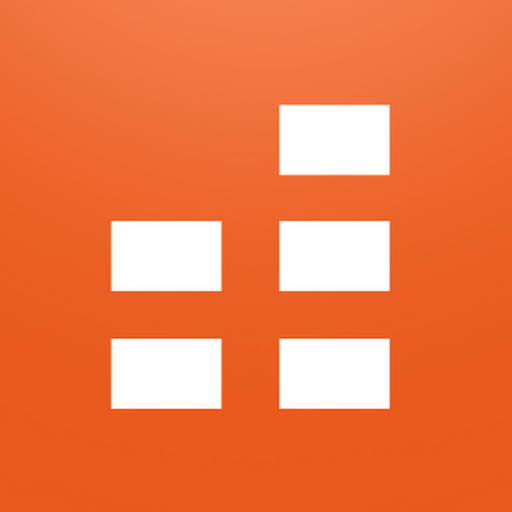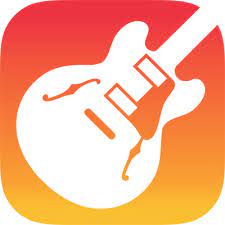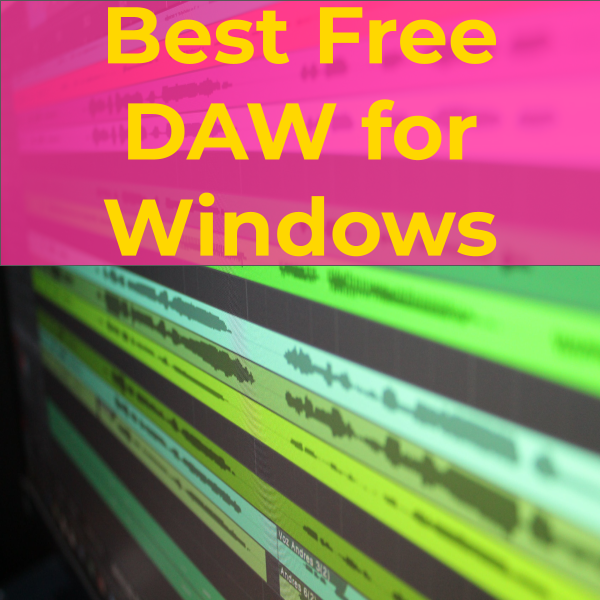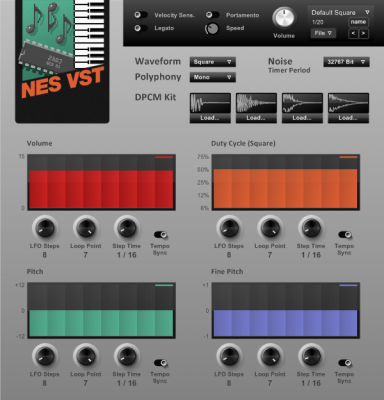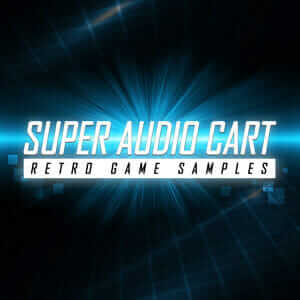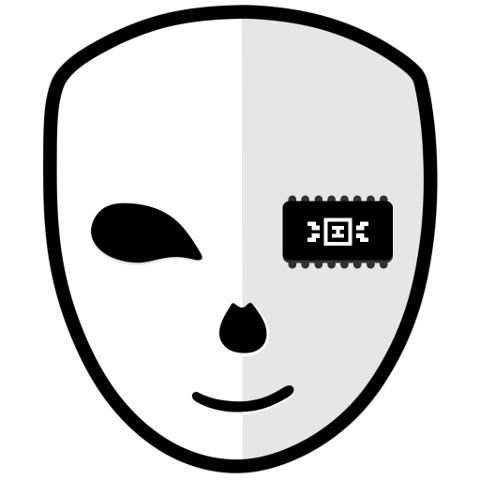8-bit music is the definitive sound of retro gaming, and has seen a resurgence in the indie game scene. Whether you’re an aspiring game composer or just making music for fun, there’s plenty of free and premium tools to help you make it.
In this guide, you’ll learn how to write 8-bit music using free and paid software. Plus, you’ll also learn some quick tips for writing 8-bit tracks effectively.

What Is 8-bit Music?
8-bit music specifically replicates the sound of early video game consoles. Most musicians today either use sample-based instruments or software that emulates their sound chips. Some hardcore enthusiasts even hack the consoles themselves to create music.
The term “8-bit” has nothing to do with audio quality. It simply references the 8-bit consoles from that era, like the NES, Game Boy, and Commodore 64.
Characteristics of 8-bit Music
Each 8-bit console had slightly different audio limitations. But broadly speaking, their sound chips could produce 3 voice channels and one noise channel (mostly used for percussion).
On paper, that’s not much to work with. But limitations breed creativity. Legendary composers like Koji Kondo worked around them and created some of the most iconic music of all time.
3 Methods For Writing 8-bit Video Game Music
Here, we’ll go over three basic methods for writing 8-bit music. With each of these, you can use free tools. But some premium tools are also available.
Method 1: Using VST Plugins With Your DAW
This is the most accessible way to write chiptune music today. Using a DAW also has other benefits:
- Unlimited tracks
- Can create and combine sounds
- Ability to use other instruments, FX, and mixing plugins
- Low barrier of entry
If you’re completely new to music production, you’ll first need to download a Digital Audio Workstation on your computer.
Thankfully, there are plenty of free DAWs available. If you’re a Mac user, you can use GarageBand.
As for Windows, I’m personally a big fan of Cakewalk. You can also choose from the wealth of other free DAWs on the market:
Cakewalk is a professional-level DAW with features that stand up against other premium applications. It comes with a robust set of tools for recording, editing, and mixing audio. The DAW also features light integration with Bandlab's online platform.
- Based on Cakewalk's legacy Sonar DAWs
- Professional-level features for audio editing, mixing, and mastering
- Integrates with Bandlab's online DAW
- Dozens of FX plugins and ProChannel modules
- Free to download
- MIDI editing is a bit clunky
- Only available for Windows
If you’re an Apple user looking for a beginner-friendly DAW, look no further than GarageBand. Even though it’s free, it comes fully-featured for recording, editing, and mixing audio for music and podcasts. Plus, it includes hundreds of loops and sounds for creating music right away, and offers support for AU plugins.
- Free on macOS and iOS devices
- Easy for beginners to use
- Includes hundreds of loops and sounds right out of the box
- Lacks professional tools found in other DAWs
- Only available for Apple devices
- Doesn’t support VST plugins — works with AU plugins only
You don’t have to pay a cent to record audio or make music on your PC. Check out our picks for the best free DAWs for Windows computers.
Next, you’ll need to download a VST plugin. My two absolute favorites are the Nintendo VST by Matt Montag and Super Audio Cart by Impact Soundworks. You can also check out my list of favorite 8-bit VST plugins.
Nintendo VST is completely free to download. Despite this, it’s one of the most well-designed and inspiring instruments I’ve ever used.
It’s a synth that replicates the NES sound chip. The interface is simple and gives you plenty of sound design options to work with.
One of the all-time greatest virtual instruments for creating 8-bit music. This plugin mimics the NES sound hardware and has an elegant design that's super easy to use. Best of all, it's 100% free!
My other favorite plugin is Super Audio Cart. It’s a premium instrument for Kontakt containing samples from 15 classic game consoles and computers.
- Read our Super Audio Cart Review
On top of that, SAC has built-in tools that let you layer sounds together or add effects. This gives you nearly unlimited possibilities for creating new and unique sounds.
Super Audio Cart includes sounds from 15 classic game consoles and computers spanning several decades. It's the most comprehensive library of retro game samples ever assembled.
Once you have your DAW and VSTs installed, you’re ready to rock!
Method 2: Using a Tracker
Back in the day, game composers didn’t have elegant software solutions like we do today. Instead, they used trackers.
Modern music trackers closely replicate the software game composers would have used in the 80s and 90s.
For 8-bit music, DefleMask is definitely the way to go. It’s a cross-platform tracker app that emulates the sound chips from eight classic game consoles. You can learn more about DefleMask in this overview.
At first glance, DefleMask looks intimidating. But there’s a certain charm to working with a tracker you can’t get from a DAW.
And while there’s a steeper learning curve, DefleMask offers some clear benefits:
- It closely emulates the sound chips in real time
- It forces you to write within the console limitations
These arguably give you the most authentic-sounding 8-bit music out of any other solution on this list.
For less than $20, DefleMask is a steal. And for what it’s worth, there’s also a free legacy version which many musicians use to great results.
With perfect emulations of eight retro sound chips, DefleMask offers one of the most authentic ways of producing chiptune music — just like the early game composers.
Method 3: Using Pxtone Collage
PxTone Collage was actually the first piece of chiptune software I ever used. It’s a freeware program developed by Daisuke “Pixel” Amaya, creator of the hit indie game “Cave Story”.
This software’s not as elegant as a DAW. And it doesn’t force console limitations like DefleMask, either.
It’s a fairly unique experience from writing in a DAW or tracker. That said, you can get some impressive results with it.
PxTone’s primary interface is a piano roller, similar to most DAW setups. With each note, you can change parameters like volume, panning, and pitch. You can even import other .wav samples and use them in your project.
The one major downside to PxTone is you can’t import or export MIDI. This severely limits your ability to collaborate with others.
Freeware chiptune maker by the game developer behind Cave Story. PxTone has a bit of a learning curve, but it's a great free way to start making retro game music.
Tips for Writing Authentic 8-bit Music
It’s one thing to write chiptune music using chip sounds. But if you want to sound authentic to the era, you’ll need to work within the constraints of each console.
These limitations can be challenging and stretch your creativity. But, it’s also fun and super rewarding to write music like this.
Know the Console Limitations
Early 8-bit game consoles could only produce 2-5 sounds at once. Each system had slightly different limitations. Let’s look over the most notable ones:
Atari 2600
The 2600 launched in 1977, and it was the first mainstream success in home console gaming. It also caused its eventual crash in 1983. Atari’s TIA chip had two oscillators, which only generated pulse waves and noise.
- 2 Audio Channels
- Only Pulse Waves and Noise
Due to limitations, most games used the two channels for sound effects. Alternatively, one channel could play music while the other played SFX. Games that used both channels for music were something truly special.
Commodore 64
The C64 first released in 1982 and quickly became one of the best-selling home computers of all time. It had the SID sound chip, which had three built-in oscillators. Each one could produce four different types of waveforms and alternate between them.
- 3 Audio Channels
- 4 Types of Waveforms (Square, Saw, Triangle, and Noise)
If you want more specifics, you can read this companion article: How to Make Commodore 64 Music.
NES
The Nintendo Entertainment System released in North America in 1985, and undoubtedly saved the gaming industry from its downfall. It could produce up to five sounds at once: three voices, one noise, and one sample.
- 2 Square Wave Channels
- 1 Triangle Wave Channel
- 1 Noise Generator Channel
- 1 DPCM (Sample) Channel
That fifth DPCM channel could play highly compressed samples. The best examples of this are the Latin percussion and timpani sprinkled throughout the Super Mario Bros. 3 soundtrack.
Game Boy
Released in 1989, the Game Boy was the first real success in handheld gaming. It could produce four sounds at the same time.
- 2 Square Wave Channels
- 1 Wavetable Channel
- 1 Noise Generator Channel
Sega Master System
The Master System was one of Sega’s early attempts at breaking into the home console market. It first released in Japan in 1985, and was moderately successful in Europe and Brazil. The original release offered four audio channels.
- 3 Square Wave Channels
- 1 Noise Generator Channel
Learn How to Imply the Harmony
With only three voices to work with, you’re extremely limited. At best, you can play 3-note chords.
But there are some more creative ways to imply harmony:
- Think of voices as independent lines: With 8-bit music, you don’t have the luxury of using pianos and guitars for harmony. Each of the three voices can move independently to support the harmony. For reference, check out some Bach fugues.
- Use arpeggios & broken chords: You can outline the harmony by having one arpeggiating voice. Think of the bass line in the Super Mario Bros. Underwater theme.
- Drop 5th of the chord: The 1st, 3rd, and (sometimes) 7th notes in a chord are what gives it flavor. In many ways, the 5th is unnecessary for outlining the harmony.
Lean Into Unique Chiptune Effects
Part of the charm with chiptune music are the effects you can create.
- Portamento slides & glissandos
- “Bubbly” sounding leads
- White noise washes
- Pulse noises for drums
- Glitchy sound effects
These are hallmark sounds you don’t often find in other styles of music. They can also be a creative way to distract listeners from the audio limitations.
Want to Write More Chiptunes? Check Out These Resources
If you enjoy writing 8-bit music, or just chiptune music in general, we’ve put together a few resources you might like:
- Jump forward to the next console generation and learn how to make 16-bit music.
- Check out our expanded list of chiptune software, vst plugins, and more.
